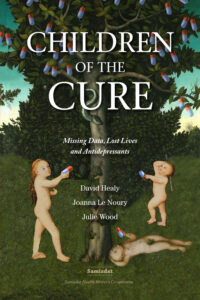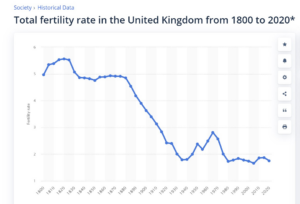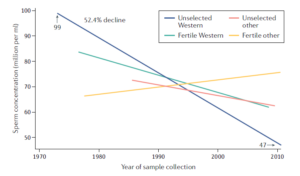
This post centers on one member of our twin greatest problems – the changing climate of healthcare – as do HealthCare Gone Mad and Pharmageddon and Fertility., and older posts – Healthcare and the Global Climate and all posts in the Politics of Care Forum.
There are linked posts on RxISK.org, starting with The Cradle of Civilization and forthcoming posts on A Sex and Fertility Timeline and Fertility Zone.
Pharmageddon
Charles Medawar created Pharmageddon, the concept and the word, around 2006. He explains it in this 2010 Conference Lecture. Pharmageddon is changing the health and human climate in a way that parallels the changes in the earth’s climate. Back in 2010, he thought we had already passed a tipping point.
Medicines and health care can be wonderful, life-saving often, just like food is – provided we are in control of it. Two decades ago, he saw us moving to a situation where some of us have too much food and too many medicines we don’t need, while others don’t have enough food or medicines to meet our basic needs.
Charles’ inspired the title Pharmageddon, written in 2008 but the book took several years to find a publisher. Its follow up, Shipwreck of the Singular, Healthcare’s Castaways, had to create a new publishing house to get published. While the word Pharmageddon is catchy, the ideas behind it are deeply at odds with our times.

Charles figured we had already passed a tipping point in 2010 – long before Greta Thunberg was heard of. There is still no sign of a Greta emerging to crystallize the problems he saw ahead of us back then, which with life expectancies and fertility rates now falling seem increasingly alarming.
Where Once We Lived
The countries in which we live are shaped by our rates of death and birth. The shaping ranges from the language we speak and our culture to how we physically look, along with how many old or young folk travellers notice when they visit.
For millennia a comparatively small human population had a relatively minimal impact on the earth’s resources and climate. We lived in groups, then tribes, and lately pretty homogenous nations.
Until 1700, most cities, even those fabled from ancient times Rome, Athens, Babylon, Beijing, Mumbai and others, were little bigger than big towns might be today, partly because they were intensely insanitary and had high death rates from plagues. Cities needed a constant supply of immigrants from the surrounding countryside to keep them viable.
Despite the scarcity of people, from the 1700s there were doom-laden predictions that we were closing in on being too populous. The earth could not sustain us all.
By 1800 with the industrial revolution, the populations of London and Paris passed half a million and new industrial cities like Liverpool, Manchester, and Lyon had taken shape.
After 1800 thanks to a French invention – modern medicine – national populations grew. It used to be fashionable to argue that population growth had nothing to do with medicine. A growth in wealth, lifting us out of poverty, led to more of us.
This is wrong. The French invented not just what is called clinical medicine, involving surgery and pharmacology, based on a medical model, but public health which was based on the same medical model.
The medical model ultimately gave rise to drug treatments for the bacteria and other germs that caused plagues, but long before we had these treatments, the discovery of bacteria had made it possible to manage plagues, especially tuberculosis. Its just not right to say our success in surviving had nothing to do with understanding what kept us alive and what killed us.
Public health triggered a new focus on infant mortality. More than anything else, reducing infant mortality around 1900 led to the twentieth century population explosion. Focussing on this, Josephine Baker (in the car below) may have been responsible for more lives saved than any medical man.
Once one country’s population starting growing, others had to follow to survive. For the French it was a national priority to have as many healthy and mobilizable men as possible to stem the threat from Germany. This rather than Christianity underpinned early twentieth century pronatalism found even in communist countries.
Declining Fertility
From 1900, as children survived and were more likely to survive, birth rates began falling from an average of 5 or more children per woman. This fall is typically attributed to social factors, but these social factors were intricately bound up with medical advances. The story is often framed in terms of the increasing emancipation and education of women. Or in terms of the opportunity costs – is she, or are the couple, willing to give up her wages? Westerners like this image of themselves.
A more recent argument taking shape has less appeal. This links the fall in birth rates to pollution stemming from the industrial revolution. The alternate story is framed in terms of fragile men rather than enslaved women. It hinges on data pointing to falling sperm counts – not just among men but among male animals like horses.
The West has led the way with falling sperm problems but Asian sperm levels are also catching down. Middle Eastern and African researchers have anxiously been scanning developments in their areas also – for France and German a century ago read Israel and its Arab neighbors now.
Although great friends with Germany now, France is still very nervous about its birth rates. It is the one country where the word pronatalism is still widely used. Last week Emmanuel Macron told the French ‘we have a fertility crisis’. There is reason for the French to worry. Following a baby boom in the 1960s, after the Second World War, from the 1980s across Europe fertility rates have fallen below the 2.1 children per woman needed for reproductive replacement.
(The Baby Boom might suggest War and a linked disaster sex as a good way to solve the fertility issues but with falling sperm counts war is a less viable option).
Initially there was no great concern, except among the French, who are the least affected in the Western world but who were still quick to notice their declining fertility and to ask what kind of measures might reverse it. The proposals centered on encouraging women (perhaps couples) to have children. To make children financially possible.
Making it financially possible to have a family gets tied up with the idea of having a family that looks like us – with maintaining our national culture.
While some in authority are concerned about matters of culture, most of us have read the continuing fall in terms of our growing sophistication and we are not alarmed.
Besides there had been a major population explosion scare as recently as 1968 with predictions that by now there would be standing room only on earth. Climate change has replaced the population timebomb as a reason not to be over-concerned about a fall in population.
Of course, engineering a population fall is not something to overdo. Population control has unsavory links to eugenics and social engineering – let’s remove the poor, the handicapped, the inefficient.
The population issue has found its way into fiction like Dan Brown’s Inferno.
And into conspiracy theory. Bill Gates is cast as the central figure in efforts to produce vaccines that would sterilize Africa. For vaccine conspiracy folk, the Covid vaccine seemed evidence of just this. But while feeding us the idea that there are people trying to kill us off, these plots hinge on imminent disaster from a still growing population.
Eros and Thanatos
We do face an imminent disaster that the authorities were keeping very quiet about – until Emmanuel broke cover. But it’s not that there are too many people – just the opposite.
The first hint of what is to come for many in the West was framed in terms of Japan’s aging population. The average age of the Japanese kept going up. They became the oldest people on earth. Europe is now catching up.
The articles on Japan warned us of the medical and social needs of this ancient population – who would parent them? Health systems would collapse in the face of their multi-morbidities.
In Greek myth, the Goddess of the Dawn, Aurora, fell in love with a mortal -Tithonus. She organized for him to become immortal but forgot to specify he should also remain forever young. He began to wither and shrivel and rather than be reminded about what had gone wrong, she changed him into a Grasshopper.
Against this backdrop, it is perhaps little surprise that many countries now positively endorse Medical Assistance in Dying (MAiD). Some, like Canada, endorsing it with what looks like amazing vigor – MAiD in Canada, MAiD and PSSD, MAiD and TRD.
Many of us figure we’d like some control over the time and manner of our passing. It’s simply on no-one’s mind at the moment that we might be encouraged to opt for an altruistic euthanasia – in order to prevent the social structure from collapsing.
Where we live is changing. We are now building more nursing homes than schools. Hedge funds and private equity are taking these homes over figuring that’s where the money is – but it won’t be if there ain’t anyone around to pay the taxes. When our social structures worked, it was because we had more than 5 tax-payers for each tax recipient in the 1960s, 3 in the 1980s and we are heading toward a 1 to 1 ratio now.
Nobody ever began life on earth at the age of 65 or older. The problem is not more and more old folk, the problem is less and less youngsters who are having less and less children.
We need a reproductive replacement rate of 2.1 to keep where we live looking much the same. The reproductive rate in Japan is 1.26 and by 2070 Japan is projected to have only 80% of its current population. Its population has fallen every year for the last 16 years. The prime minister has declared a crisis.
Western reproductive replacement rates have not been on any Western radars – except France. Recent Spanish and Italian rates have hovered around 1.23 and 1.24. If this continues, Spain may have only 75% of its current population by 2050.
A crisis like this calls for drastic solutions. Spain’s pride and joy – its successful women’s football team – might have to be disbanded as extreme fitness apparently reduces the likelihood of a pregnancy.
This last point may sound like it is trivializing a serious problem. Far from it. We face drastic changes. In order to sustain the progressive social structures of which Westerners have been very proud. Just as London and Paris from 1600 onwards had to, entire countries may now have to permit, tolerate, live with mass immigration. Several million in the case of Spain.
The birth rate among many native Western populations may be drastically lower than 1.20. The natives, who are more likely to be taking medicines than the immigrants, are not replacing themselves. In Britain one in three births are to women not born in the UK. In London, two thirds of births are to a parent not born in the UK.
At a time when immigrants are flooding into Western countries and immigration is the hottest of hot political issues, there is no better example of the personal becoming political than drawing attention to the fertility problems caused by the medicines we take. But like parents getting awkward when it comes to telling children about sex, the authorities are hopping from foot to foot, scared to broach the harms of prescription medicines – not even Emmanuel dares mention this.
A century ago, Freud famously grappled with a sense derived from the cases he had seen that, in addition to a life drive, libido, we have a Death Instinct. This idea maps onto many mythologies, where Goddesses or Gods for Fertility sit beside a Death Force. Freud counterbalanced Eros and Thanatos – within each of us.
We now have a collective Life and Death struggle.
The drugs that are at the very least contributing to these problems may partially rescue us. The polypharmacy pandemic – See The Cradle of Civilization – has been reducing Western Life Expectancies for a decade – Pharmageddon and Fertility. The problem is life expectancies are falling even among the young, whom we need to provide the replacements, and there are increasing rates of maternal mortality and infant death.
There is an even bigger problem. We are told that keeping Global Temperatures to 1.5 C above what they were is the very least we must do and even then the ice will continue to melt. The temperature increase is built in. Four Decades of Fertility Rates below the 2.1 Reproductive Replacement Rate is also built in. Not only is each woman now having less babies, there are less women having less babies. Even if some countries manage to get Fertility Rates back to 2.1 their social structure problems will continue to grow.
France has a Fertility Rate 20% above the European average but it seems to be the only country in Europe aware of a Demographic Doom Scenario – translation here. It alone is trying to stimulate a public debate.
At the same time, France finds it close to impossible to have a public debate about the risks of medicines. Pharmaceutical companies are not eugenicists but they recognize the social problems we all face and hold out more drugs and now vaccines as the answer to our social problems. Biological answers to social problems looked very seductive in the 1930s and 1940s and are at the heart of Pharmageddon now. See Let’s Do the AbbVie Again and related posts.

Climate change is front page news across the world. Greta Thunberg and her generation have helped put it there – but this generation is suffering more than any prior generation in human history from the changing climate in health, and seem totally unaware of this. This generation is pumping more medical chemicals into themselves than any prior generation in human history.
They are compromising our future as much if not more than any industrialists pumping chemicals into the environment and they cannot see the connections.

Greta and the Pope are keen to try and maintain the appearances of Eden. Both happily eat the fruit. The Pope even mandates Vaticaners to eat the fruit in the form of vaccines. See In Secula Seculorum for more on the Pope and the French.
But its the fruit of the trees in Eden that is the problem not the air quality.
The biological answer to the social problem is stopping the medicines.
We need a Jeanne D’ Arc, someone who is not a Spare Rib, to ignite greater awareness of this.





a public debate about the risks of medicines.
The biological answer to the social problem is stopping the medicines.
Not coming soon…
Fertility rate: ‘Jaw-dropping’ global crash in children being born
https://www.bbc.co.uk/news/health-53409521
Why are fertility rates falling?
It has nothing to do with sperm counts or the usual things that come to mind when discussing fertility.
Instead it is being driven by more women in education and work, as well as greater access to contraception, leading to women choosing to have fewer children.
In many ways, falling fertility rates are a success story.
“The report reveals an important truth – infertility does not discriminate,” said the Director-General of WHO, Dr Tedros Adhanom.
He added: “The sheer proportion of people affected shows the need to widen access to fertility care and ensure this issue is no longer sidelined in health research and policy, so that safe, effective and affordable ways to attain parenthood are available for those who seek it.”
https://study329.org/wp-content/uploads/2015/08/Medawar.pdf
John Le Carre paints a persuasive and very beautifully documented picture of the drug company painted in terms of simple shades of black and white – good and evil. The drug company behaves ruthlessly and murderously and so on. But it really is not like that. It is the relentlessness and the overwhelmingness of what they do – just the sheer volume of material. You can’t end it by pointing at an advertisement. You can frequently point at an advertisement and say ‘that’s misleading’, but that isn’t the problem. The problem is the culture, the problem is the overwhelming volume of them. It would be very easy to go mad doing this kind of work.
What about psychiatrists who use your stuff but don’t want to use the name?
Well if my survival was dependent on how many times my work was cited, I would have been a dead duck a long time ago.
Charles Medawar was so ahead of his time.
Social Audit was such a great service. It all spilled out and many of us were astounded, at that time, as to what was going on.
“ simple shades of black and white – good and evil”
Fertility is a complex issue, when Pharma giveth and Pharma taketh away, and to say that
“In many ways, falling fertility rates are a success story.”
does not address ‘seeing the connections’
“the problem is the overwhelming volume of them.”
Even to Macron, doesn’t that need addressing?
As the potential harms of these drugs continue to pile up, Telehealth is expanding to fill the demand in the USA.
Market leader Hims.com offers younger men everything a Manly Man might want for confidence, good looks and sexual vigor. Offerings range from chewable Viagra to … finasteride for thinning hair and Lexapro for depression or anxiety. (Oh yeah, and Zoloft for premature ejaculation.)
These online “doctors” are capitalizing on increasing gaps in medical services–and of course, an exploding post-lockdown demand for mental-health services. Few men will realize that Hims may be peddling treatments and diseases on the same page.
https://www.hims.com/
And here’s one of the many sites specializing in testosterone treatments:
https://www.regenxhealth.com/testosterone-research-and-news
No actual deficiency? No problem. A recent undercover probe by a 30-something urologist found that 6 out of 7 websites were happy to prescribe him “T” even after he sent them lab results showing blood levels well within normal range.
Testosterone Telehealth may be reined in a bit in coming months as pandemic-era rules expire: Because T is a steroid used illicitly by body-builders, it’s subject to extra regulation as a drug with “abuse potential.” But SSRI anti-depressants? They’re as safe as mom and apple pie, apparently. Finasteride too, it seems. (And fear not, there’s also a Hers.com, offering everything from skin care to birth control along with all those antidepressants.)